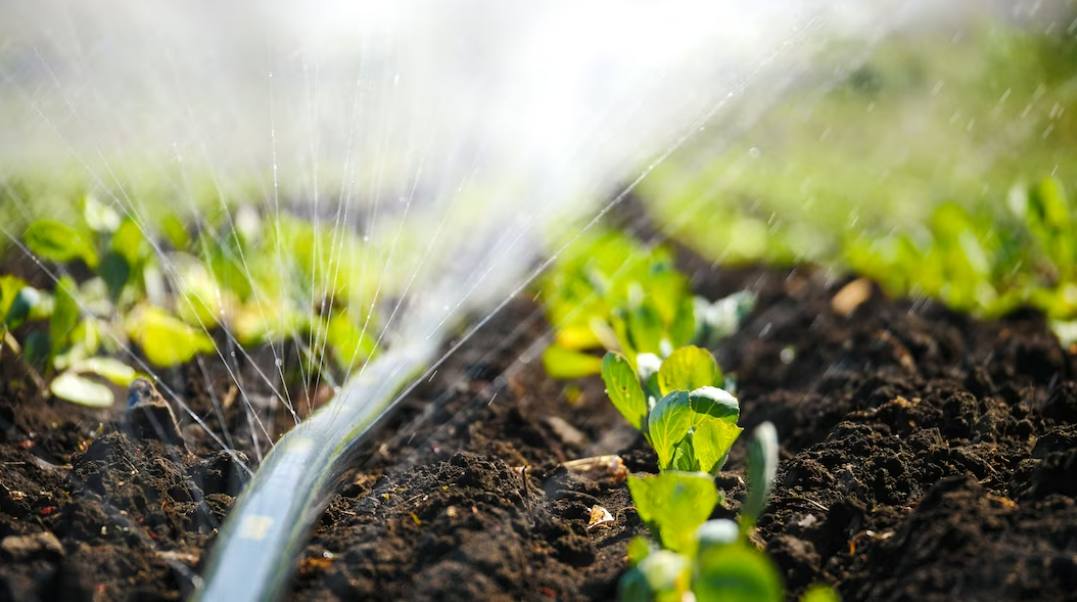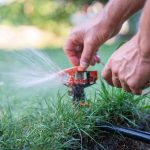Choosing the right irrigation method for your crops can feel like a daunting task. With so many options available, how do you know which one will best suit your needs?
Imagine the impact of making the perfect choice: thriving plants, increased yields, and efficient use of resources. The wrong decision, however, could lead to wasted water and less productive crops. But don’t worry, you’re not alone in this decision-making process.
This guide will walk you through the key considerations and help you select the ideal irrigation method tailored just for your farm. Stay with us, and discover how the right choice can transform your agricultural success.

Assessing Soil And Climate
Choosing the right irrigation method starts with understanding your soil and climate. Each crop thrives in specific conditions. So, assessing these factors is crucial.
Soil type affects water absorption and retention. Climate impacts evaporation rates and rainfall patterns. Knowing these details helps in selecting the best irrigation method for your crops.
Understanding Soil Types
Different soils have unique properties. Sandy soil drains quickly. Clay soil holds water longer. Loamy soil balances drainage and retention. Identify your soil type to tailor your irrigation system.
Evaluating Climate Conditions
Climate influences irrigation needs. Dry regions require more water. Humid areas may need less. Seasonal changes also affect watering schedules. Adapt your irrigation plan according to these conditions.
Considering Soil Ph Levels
Soil pH impacts nutrient availability. Test your soil regularly. Adjust irrigation to maintain optimal pH levels. Healthy soil promotes crop growth and yield.
Monitoring Temperature And Humidity
Temperature affects plant growth rates. Humidity influences water loss. Track these metrics for efficient irrigation. Ensure your crops receive the right amount of water.
Types Of Irrigation Systems
Choosing the right irrigation system is crucial for crop health. Different systems suit various crops and environments. Understanding these systems helps in selecting the best one. This section explores the different types of irrigation systems. Each system has its unique advantages and considerations.
Surface Irrigation
Surface irrigation involves water flowing over the soil by gravity. It’s one of the oldest methods and is suitable for flat lands. It requires minimal equipment and works well for certain crops. Farmers must manage water flow to avoid wastage.
Drip Irrigation
Drip irrigation delivers water directly to the plant roots. It uses a network of tubes and emitters. This system is efficient and conserves water. Ideal for arid regions and precise watering needs. It reduces evaporation and minimizes weed growth.
Sprinkler Irrigation
Sprinkler systems mimic natural rainfall. Water is sprayed over the crops through pipes and sprinklers. Suitable for a wide range of soil types. It provides uniform coverage and is easy to control. Regular maintenance ensures efficient operation.
Subsurface Irrigation
Subsurface irrigation waters crops from below the surface. Pipes or tubes are buried underground. It reduces evaporation and water wastage. Ideal for regions with limited water supply. It requires careful installation and maintenance.
Center Pivot Irrigation
Center pivot systems rotate around a central point. Water is distributed through overhead sprinklers. Suitable for large, circular fields. It provides efficient water use and covers large areas. Regular checks ensure system effectiveness.
Furrow Irrigation
Furrow irrigation involves creating small channels along crop rows. Water flows through these furrows, soaking the soil. It’s simple and cost-effective for row crops. Proper leveling is essential to prevent waterlogging.
Localized Irrigation
Localized irrigation targets specific plant areas. It includes systems like micro-sprinklers and bubbler irrigation. This method conserves water and reduces evaporation. It is ideal for landscapes and gardens with diverse plants. Efficient for high-value crops.
Evaluating Water Efficiency
Choosing the right irrigation method is crucial for maximizing water efficiency in your crops. It’s all about making sure every drop counts. Efficient irrigation not only conserves water but also boosts crop yield and reduces costs.
Reflecting on my own experience, I learned the hard way that not all irrigation systems are created equal. I once invested in a system that promised high efficiency, but instead, I ended up with uneven watering and wasted resources. This taught me the importance of evaluating water efficiency before making any decisions.
Understanding Your Crop Needs
Different crops have different water requirements. Some need a steady supply, while others thrive with less frequent watering. Consider the specific needs of your crops when evaluating irrigation methods. This ensures that you are not over or under-watering.
Analyzing Soil Type
Your soil plays a significant role in water retention. Sandy soils drain quickly, while clay soils hold water longer. Knowing your soil type helps you choose an irrigation method that complements its natural characteristics, ensuring efficient water use.
Comparing Irrigation Technologies
There are various irrigation technologies available, from drip systems to overhead sprinklers. Compare their water efficiency ratings. Drip systems, for instance, are known for delivering water directly to the roots, minimizing evaporation and runoff.
Considering Environmental Impact
Efficient irrigation also means being mindful of the environment. Evaluate how each method affects local water sources and ecosystems. Does it minimize waste and pollution? Choosing an eco-friendly method can make a significant difference.
Calculating Cost Vs. Benefits
It’s essential to weigh the costs against the benefits. A more efficient system might be expensive upfront but can save money in the long run. Consider not just the initial investment but also the savings in water and increased crop yield.
As you evaluate water efficiency, ask yourself: Are you truly optimizing your water usage? Are your resources being used effectively? These questions can guide you toward the most suitable irrigation method for your crops. By focusing on water efficiency, you can ensure your crops are healthy and thriving, without draining precious resources.

Cost And Maintenance Considerations
Choosing the right irrigation method involves understanding costs and maintenance. Each method comes with its own set of expenses. Maintenance requirements can impact your choice significantly.
Cost Analysis
Evaluate initial setup costs. Drip systems might be expensive to install. Sprinklers often need less initial investment. Consider long-term expenses too. Drip systems save water, reducing bills over time.
Maintenance Requirements
Maintenance affects your time and resources. Sprinklers need regular checks to ensure proper function. Drip systems may clog, requiring careful monitoring. Evaluate labor costs for maintenance activities.
Balancing Cost And Maintenance
Finding the right balance is crucial. Weigh initial costs against potential savings. Consider how much time you can spend on maintenance. Choose a method that aligns with your budget and schedule.
Long-term Financial Impact
Think about future financial implications. Efficient methods can lead to savings. Reduced water use saves money and resources. Investing in the right system pays off in the long run.

Conclusion
Choosing the right irrigation method boosts crop health and yields. Evaluate each option carefully. Consider your crop needs, climate, and budget. Drip irrigation suits water conservation needs. Sprinkler systems work for larger fields. Surface irrigation is simple and traditional. Match the method with your specific requirements.
Consult local experts if needed. Proper irrigation saves water and enhances growth. Keep monitoring and adjusting as needed. Your crops will thrive with the right care. Efficient irrigation leads to a successful harvest. Make informed decisions for the best outcomes.

